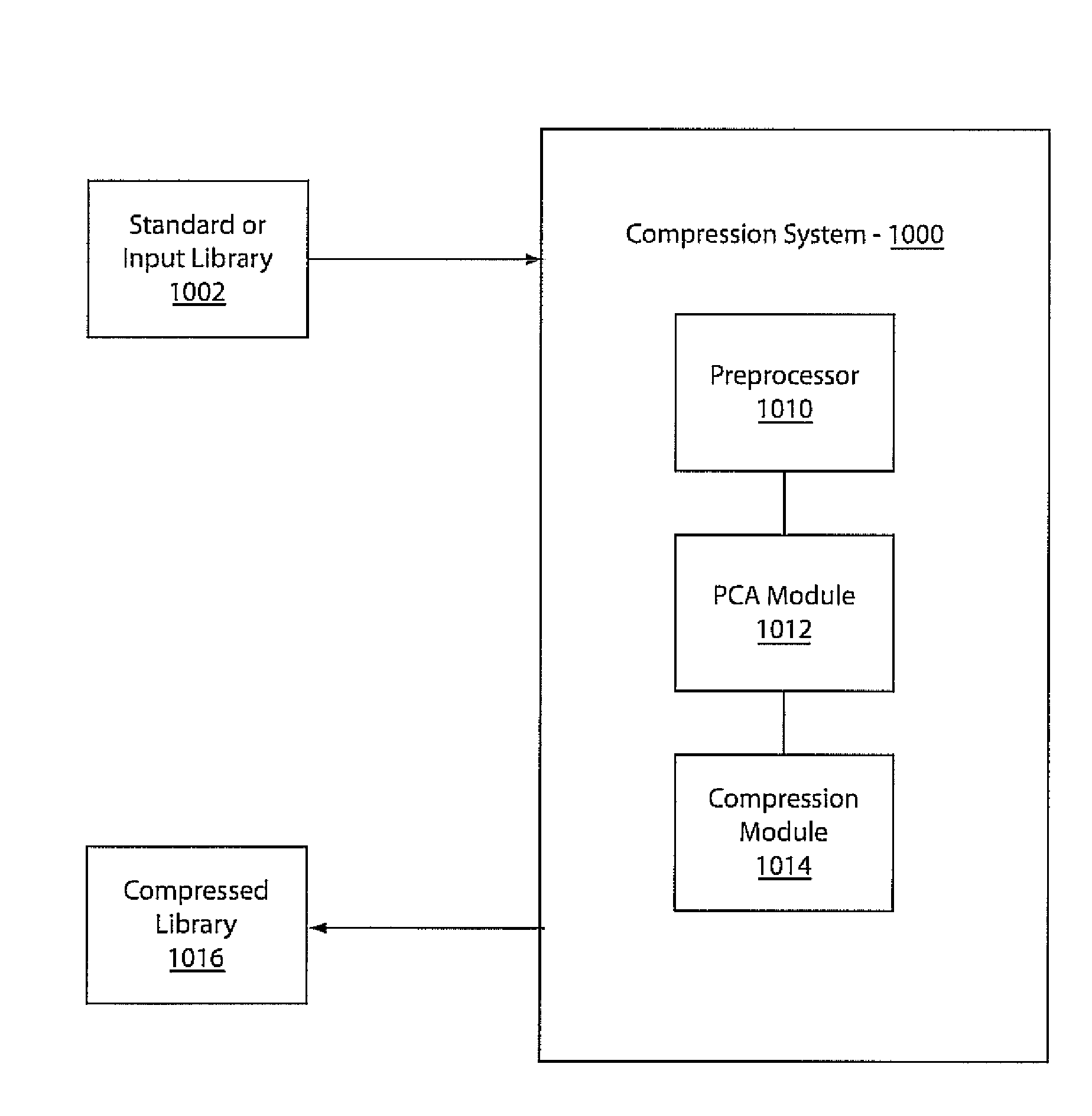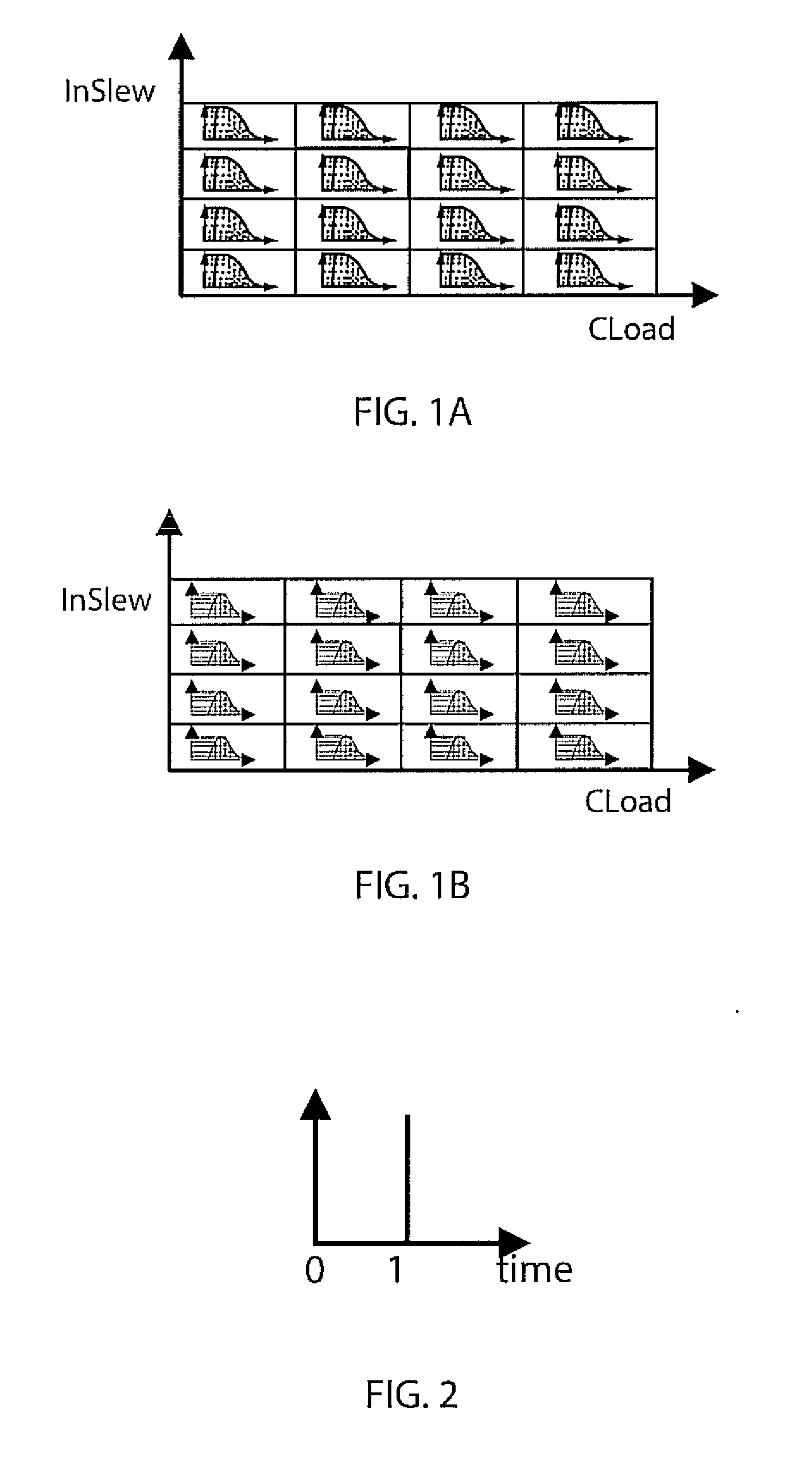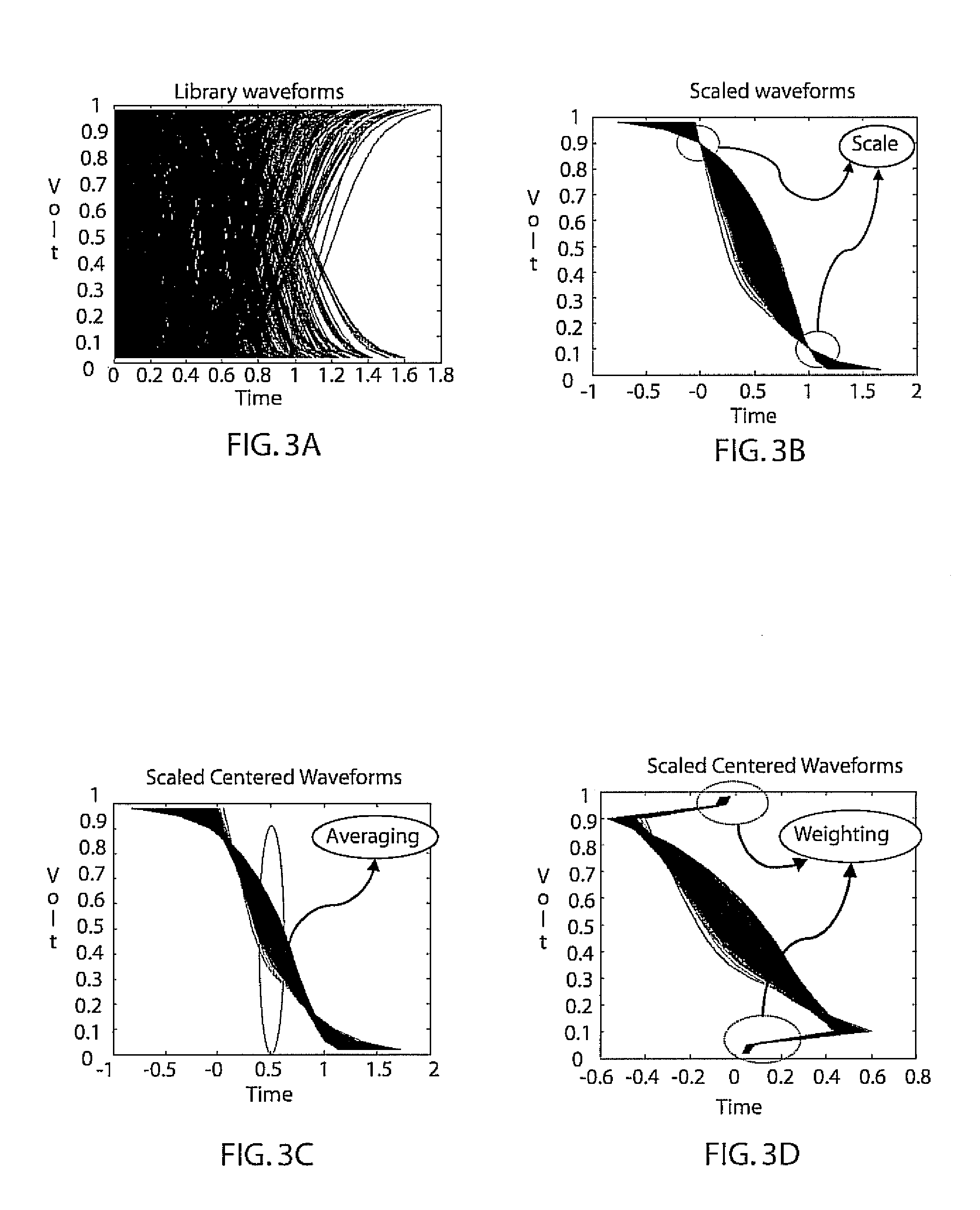Efficient compression and handling of model library waveforms
a model library and waveform technology, applied in the field of data storage, can solve the problems of library modeling data explosion, library cell modeling methodology no longer accepted as accurate for the new nanometer-era cmos technology, and further compound library size problems, so as to reduce the amount of stored information needed, the effect of increasing the compression ratio
- Summary
- Abstract
- Description
- Claims
- Application Information
AI Technical Summary
Benefits of technology
Problems solved by technology
Method used
Image
Examples
Embodiment Construction
[0035]In accordance with the present principles, systems and methods for efficient storage of waveforms and waveform libraries are provided. The employed method represents each library waveform using a variable number of basis waveforms, their number being determined by the desired accuracy. For example, 2-3 basis waveforms will be sufficient to represent the majority of the library waveform set, while a much smaller set of difficult library waveforms would need up to 14 basis waveforms. Adaptive compression is also used to retain causality properties of each library waveform by increasing the number of basis waveforms until both the required accuracy and causality is attained. This adaptive method results in a lower average number of basis waveforms necessary to represent each of the waveforms in the library, thus resulting in higher compression ratios than a fixed set representation.
[0036]The compression introduced in accordance with the present embodiments is based on rigorous an...
PUM
 Login to View More
Login to View More Abstract
Description
Claims
Application Information
 Login to View More
Login to View More - R&D
- Intellectual Property
- Life Sciences
- Materials
- Tech Scout
- Unparalleled Data Quality
- Higher Quality Content
- 60% Fewer Hallucinations
Browse by: Latest US Patents, China's latest patents, Technical Efficacy Thesaurus, Application Domain, Technology Topic, Popular Technical Reports.
© 2025 PatSnap. All rights reserved.Legal|Privacy policy|Modern Slavery Act Transparency Statement|Sitemap|About US| Contact US: help@patsnap.com



